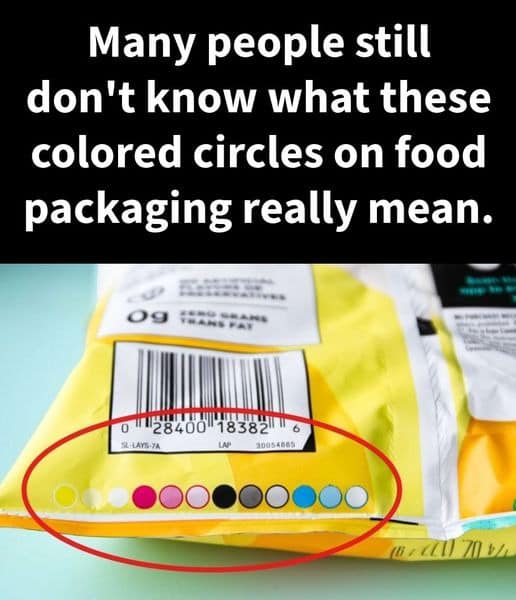ADVERTISEMENT
- Sustainability and Ethical Choices:
- Some brands use colored circles to indicate the sustainability of their products. For example, a green circle might represent organic ingredients, while a brown circle could indicate that the product is sourced from fair trade practices. This information helps consumers support environmentally friendly and ethically sourced products.
- Dietary Information:
- Colored circles can also convey dietary suitability. For example, a blue circle might indicate that a product is vegan, while a red circle could denote that it contains gluten. These indicators cater to various dietary preferences and restrictions, making it easier for consumers to find products that fit their needs.
- Expiration and Quality Indicators:
- Some companies utilize colored circles to indicate the freshness or quality of the product. A green circle might signify a product that is still fresh, while yellow could indicate that it is nearing its expiration date. This system can be particularly useful for perishable items, helping consumers make better purchasing decisions.
Understanding the Color Coding
While the meanings of these colored circles can vary by manufacturer, here’s a general guide to what the colors might represent:
- Green: Generally indicates healthy choices, organic products, or positive environmental impact.
- Yellow: Often signifies caution, which may relate to moderate levels of sugar, salt, or fat.
- Red: Typically indicates products that may be unhealthy or contain high levels of certain ingredients that should be consumed in moderation.
- Blue: May represent allergen information or dietary suitability, such as vegan or gluten-free options.
- Brown: Often associated with fair trade practices or whole food ingredients.
How to Use This Information
- Be Informed: Take the time to understand what the colors mean for your favorite products. Look for a key or legend on the packaging, as many brands provide an explanation of their color-coding system.
- Make Healthier Choices: Use these colored circles as a quick reference when shopping to help you choose healthier options for you and your family.
- Consider Your Dietary Needs: If you have allergies or specific dietary requirements, pay close attention to these indicators to ensure the products you choose are safe for you.
- Support Sustainable Brands: If sustainability and ethical sourcing are important to you, look for products that use color coding to indicate their commitment to these practices.
Conclusion
The colored circles on food packaging are more than just decorative elements; they serve as vital indicators that can help consumers make better-informed choices. By understanding what these colors mean, you can navigate the grocery store with confidence, selecting products that align with your nutritional goals, dietary needs, and ethical values. So next time you’re shopping, take a moment to look at those colored circles—they might just lead you to healthier and more responsible choices!

